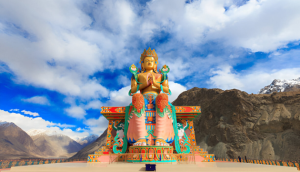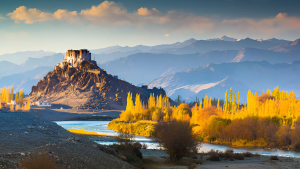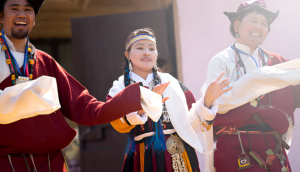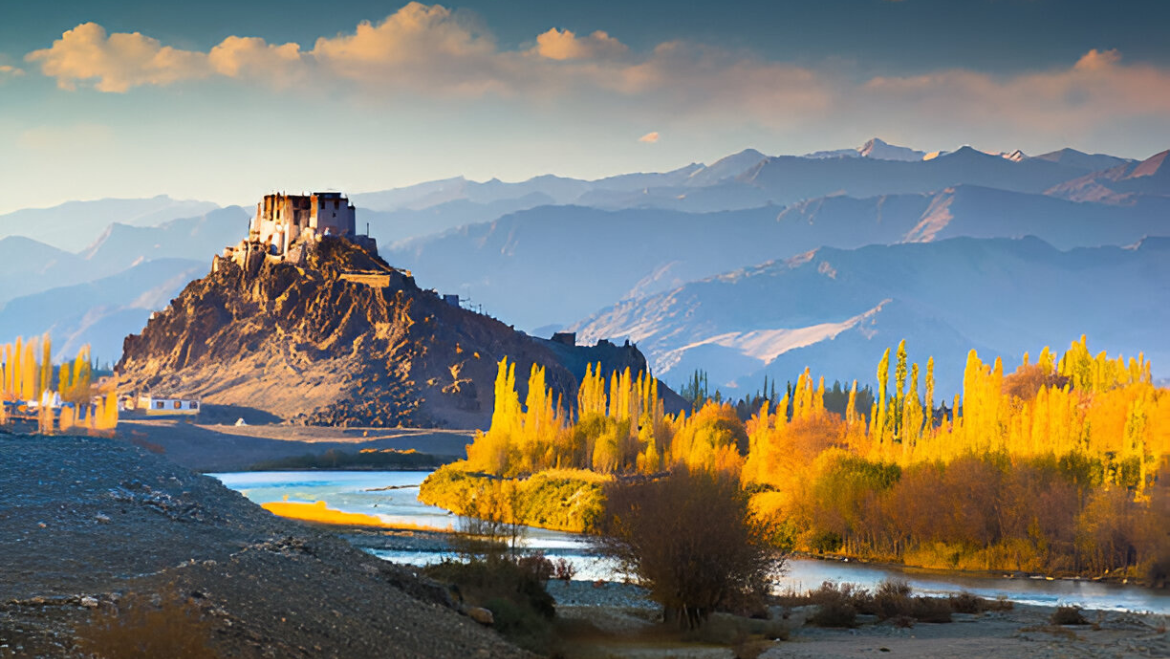The Beauty of Ladakh: Culture, Traditions & Spirituality
Ladakh, a place with breathtaking scenery and long-standing tradition, gives the visitor a sense of being immersed in a realm where religion and culture become perfectly integrated with normal life. Indian tour spots of the northern region offer visitors the opportunity to get immersed in calmness as much as in adventurous activities and real native cultural interaction.
The Cultural Essence of Ladakh
People in Ladakh follow customs developed by connecting Indian and Tibetan ways of life. The beauty of Ladakh lies in its vibrant festivals, traditional dances, and ancient monasteries, all of which reflect the deep spiritual beliefs of its people.
The culture of Ladakh displays warmth and welcoming behavior alongside simplicity and basic simplicity in living standards within their society. Throughout generations, they keep their cultural values intact to maintain their heritage identity.
Spirituality and Ladakh Religion

The people typically refer to Ladakh as the ‘Land of Lamas’ because Buddhism strongly influences the area. The majority of Ladakh people follow Tibetan Buddhism which shows in many monasteries, spread across their land. Each monastery of Hemis Thiksey and Diskit operates as a venue for religious practice and meditation learning for community members.
Ladakh’s natural beauty expands through the movement of prayer flags and the hypnotic sounds of monks chanting spiritual words which establish peaceful serenity.
Alongside Buddhism, few Muslims and Christians live in Ladakh which enriches its diverse cultural environment. The mixing of multiple religious groups living beside each other in Ladakh illustrates how people here practice unity.
Ladakh Tradition: A Glimpse into the Past

Even though modern life changed, Ladakhans faithfully follow traditional customs from their past. During ceremonies and festivals, the traditional attire Goncha remains in use for both male and female residents.
Women use delicate silver accessories, coral, and turquoise pieces to enhance their appearance which enhances the distinctive style of Ladakhian clothing.
People and families in Ladakh organize large wedding events with music performances and traditional wedding practices. Buddhist monks called ‘Lamas’ take part in every major life event by officiating ceremonies, especially weddings. Through this practice, Ladakhi people stay connected to their historical roots while uniting their community, contributing to the beauty of Ladakh.
The Ladakh Lifestyle and Culture

The people of Ladakh follow a sustainable way of life and adjust easily to the challenging environment. Ladakh residents lead a simple existence by working in farming land and breeding livestock alongside running tourist businesses.
Barley wheat and peas form the base of farm production in Ladakh and locals enjoy Thukpa noodle soup and Skyu pasta dishes. People consume daily butter tea made from yak butter and salt because it keeps them warm in Ladakhi weather.
The beauty of Ladakh is further reflected in its communal lifestyle, where neighbors support one another, and festivals become grand social gatherings. The people of Ladakh organize festivals such as Losar, Hemis, and the Ladakh Festival where everyone performs traditional routines and honors religious practices with global tourists visiting them.
The Architectural Beauty of Ladakh
Ladakh draws its architectural style from Tibetan, Indian, and Kashmiri traditions. The monasteries, palaces, and stupas from Ladakh represent its spiritual heart through their unique architectural charm. The royal past of Ladakh exists in the Leh Palace which paid tribute to Tibet’s Potala Palace while the Alchi Monastery embraced the finest artworks over history.
The beauty of Ladakh’s architecture is not just in its grandeur but also in its functionality. The regular houses from mud bricks and wood withstand harsh weather and keep the inside sheltered from frigid temperatures. Inside these buildings religious frescoes and woodwork detail Ladakh’s history and faith.
Festivals and Celebrations
Ladakh celebrates many festivals that display perfectly its living culture through vivid rituals. Great celebration of the Hemis Festival presides over the birthday of Guru Padma Sambhava in which the sacred rituals are performed by masked dancers for his beneficence.
The Ladakhi festival also offers the visitors dancing, music, handicrafts, and cultural heritage exhibits which get an appreciation of the splendor of Ladakh’s heritage.
Each Tibetan New Year during Losar brings families together to decorate homes and pray while celebrating new prosperity. Festivals in Ladakh both protect ancient local cultural heritage and provide visitors with unforgettable moments.
Conclusion
The beauty of Ladakh is an experience that goes beyond just its picturesque landscapes. Ladakh’s enchanting light exists through its unique cultural heritage and spiritual practices which bind deeply with its visitors. People who explore Ladakh discover that the monasteries against mountain peaks combined with traditional Buddhist practices create an exceptional experience that stays with you forever. Contact Tcl for travel booking.
FAQs
What is the primary religion followed in Ladakh?
Tibetan Buddhism stands as the principal religious doctrine in Ladakh. The religious diversity of this region includes tiny Muslim and Christian populations in addition to the main Tibetan Buddhist inhabitants.
What festivals do Ladakh residents celebrate on a major scale?
Among the major festivals in Ladakh stands the Hemis Festival together with Losar (Tibetan New Year) and the Ladakh Festival which display Ladakhi beauty through musical performances and religious practices.
Traditional residents from Ladakh choose to wear which specific type of clothing?
The traditional clothing of Ladakh residents brings together the Goncha, woolen robe which functions as common attire for men and women. Turquoise combined with silver make up the elaborate accessories that women typically wear during their outfits.
How does Ladakh’s population adapt to harsh weather?
The main focus of Ladakh is to uphold principles of sustainable existence. The harsh climatic conditions guide traditional house construction while the citizens consume warming foods like Thukpa and butter tea to maintain energy levels.
What makes Ladakh’s architecture unique?
The architectural style of Ladakh derives its legacy from Tibetan as well as Kashmiri traditions of construction. Architecture in Ladakh functions for endurance through detailed stone carvings that display spiritual artwork.

Recent Comments